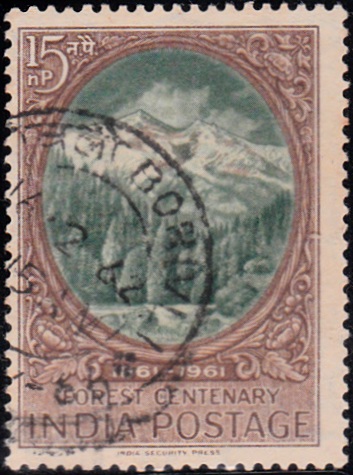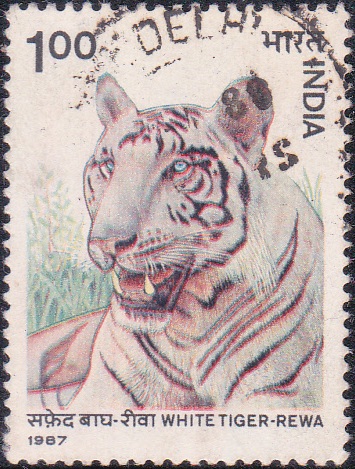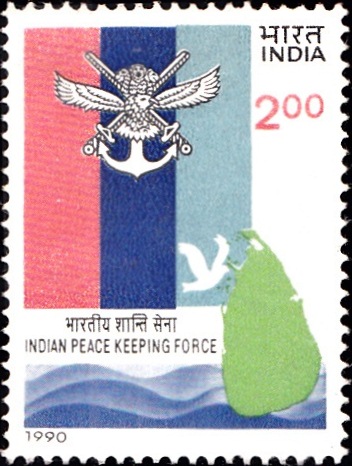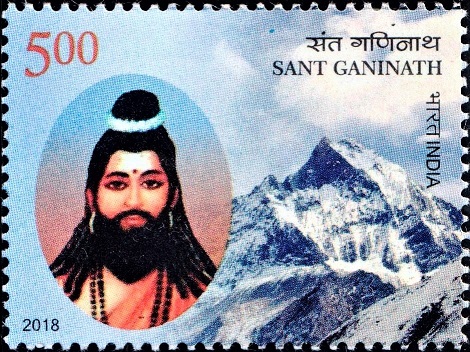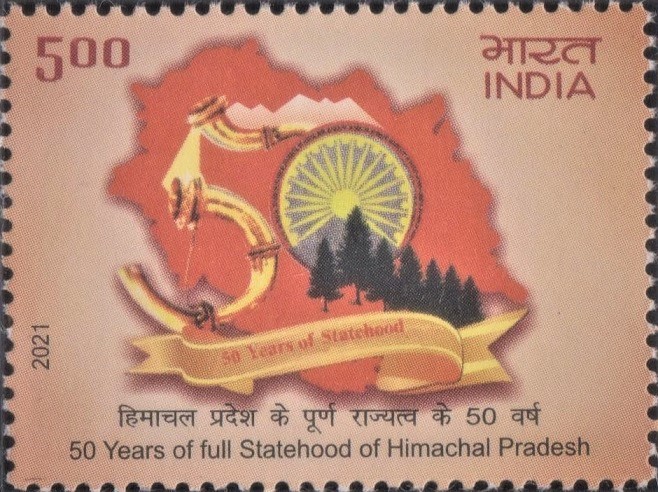
Himachal Pradesh
A commemorative postage stamp on 50 years of full statehood of Himachal Pradesh, a northern Himalayan state of India :
 Issued by India
Issued by India
Issued on Jan 25, 2021
Issued for : Department of Posts is pleased to issue a Commemorative Postage Stamp on “50 Years of full statehood of Himachal Pradesh”.
Credits :
Stamps/FDC/Brochure : Smt. Vinita Sinha
Cancellation Cachet : Smt. Alka Sharma
Type : Stamp, Mint Condition
Colour : Multi Colour
Denomination : 500 Paise
Stamps Printed : 403825
Printing Process : Wet Offset
Printer : Security Printing Press, Hyderabad
About :
- Himachal Pradesh came into existence as Chief Commissioner’s Province on 15 April, 1948 exactly eight months after India’s Independence as a result of the integration of 30 small and big princely Hill States. Mr. N. C. Mehta, Indian Civil Service (ICS) was appointed as the first Chief Commissioner assisted by his deputy Mr. E. Penderal Moon, ICS.
- The Mahasu district was formed by merging 26 small and big princely states of Shimla Hill States. Mandi and Suket princely states were merged to form Mandi district. Chamba and Sirmaur were given the status of separate districts. 23 tehsils were formed in these four districts. Himachal Pradesh had an area of 10,451 sq. miles with population of 9,83,367. In July 1954, Bilaspur was merged with Himachal to form the fifth district of the state.
- After the formation of Himachal Pradesh, other leaders including Dr. Y.S. Parmar continued their struggle with the Government of India to form a popular government in the State. Himachal Pradesh was made a part ‘C’ state with the provision for Vidhan Sabha. The first elections for the Vidhan Sabha in Himachal were held in 1952, in which voting was held for 36 seats. In March 1952, Dr. Parmar was sworn in as the first Chief Minister of this state and formed his Cabinet of three members. The other two ministers in his cabinet including were Pandit Gauri Prasad and Pandit Padam Dev.
- In December 1953, the Government of India set up a Commission for the re-organization of States. Dr. Parmar wrote a letter to the chairman of the commission urging him to merge the hilly areas of Punjab in Himachal Pradesh but acting contrary, the commission suggested Himachal Pradesh to be merged with Punjab. This endangered the very existence of Himachal Pradesh. The people and different political parties of the state strongly opposed this suggestion and as a result, the Union of India assured to maintain its separate existence keeping in view of the geographical, cultural and economic conditions of the state. After the enactment of the ‘States Reorganization Act’ in 1956, the Himachal Pradesh Vidhan Sabha was abolished on 31 October, 1956 and was replaced by a Territorial Council. Thus, Himachal Pradesh became a Union Territory on 1st November, 1956.
- Elections to the Territorial Council were held in 1957. On 15 August, 1957, Thakur Karam Singh was sworn in as the Chairman of the Council. The Territorial Council was only a local Self-Government and the Lt. Governor exercised all the powers of administration. However, the people of the State were not satisfied with this system. Ceding to the demand, the Lok Sabha passed the Government of Union Territories Act in 1963 and converted the Territorial Council into Himachal Pradesh Vidhan Sabha on July 1, 1963. As a result, a three-member cabinet was formed again and Dr. Y.S. Parmar became the Chief Minister for the second time.
- Considering the similarity in geographical conditions, culture, social system, language, lifestyle and ethos, the people and politicians of Himachal Pradesh had been long demanding that hilly areas like Kangra, Kullu, Lahaul–Spiti, Shimla, Una, Nalagarh and Dalhousie should be included in Himachal Pradesh.
- When the Government of India set up the ‘Punjab States Reorganization Commission’ in 1965, the Himachal Pradesh Government also sent a draft related to formation of ‘Vishal Himachal’ to the Union of India and the Chairman of the Punjab States Reorganization Commission, to include the hilly areas of Punjab in Himachal. Based on recommendations of the Commission, the Government of India presented ‘Punjab States Reorganization Act’ in parliament and passed it consequently. Kangra, Una, Hamirpur, Kullu, Lahaul–Spiti, Shimla, Nalagarh, Kandaghat and Dalhousie etc. were included in Himachal Pradesh on 1st November, 1966. With the inclusion of these areas, the total area of Himachal was increased to 55,673 sq. km which continues to be same today.
- Attainment of Statehood
- The merger of the hilly areas of Punjab with Himachal Pradesh led to the geographical, social, cultural and linguistic reunification of the people but the state was yet to get status of Statehood. In December 1970, the Parliament passed the ‘State of Himachal Pradesh Act-1970’. On 25 January, 1971, the then Prime Minister of India Smt. Indira Gandhi herself visited Shimla and announced to grant the Statehood status to Himachal Pradesh making it the 18th State of India.
- Thus, 25 January, a day of great happiness for the hardworking and innocent people, political leaders, freedom fighters and workers of Prajamandals of the state realized the long cherished dream come alive. The State is completing its 50 years of magnificent journey on 25th January, 2021 and Golden Jubilee Year to be celebrated to make it memorable in annals of history.
- Development journey of the State
- Himachal Pradesh has traversed through difficult phase for attainment of Statehood. This state, which came into existence on 15 April, 1948, started its onward development journey from scratch, and the development that Himachal Pradesh has achieved is inspiring for other hilly regions during the last 50 years. Since then, the state has witnessed all-round development making a huge leap in socio-economic transformation. Despite tough geographical conditions and limited resources, State has made significant progress in all spheres particularly in the areas of agriculture, horticulture, road network, education and health.
- According to the available data of 1951-52, the total literacy rate in the state was only 4.8 percent while the female literacy rate was only 2.9 percent. 301 educational institutions were functional in the State, limited to urban areas only. There were only 88 health institutions and 288 km road length. There was lack of facilities with regard to irrigation, drinking water etc. People of villages had to walk miles to fetch water from springs and water bodies. Electricity was available only in six villages. The per capita income was only Rs. 240.
- An area of 3.92 lakh hectares (1951-52) was cultivated for agricultural purpose and production of food grains were limited to 1.99 lakh metric tonne at that time. The reorganization of Punjab in the year 1966 led to some increase in agricultural land and food production due to new areas added to the state. An area of 7,76,000 hectares was under agriculture while food production was 7,04,000 metric tonne. Today, agricultural activities are being done on 9.55 lakh hectares in the state and food production has also increased to 16.36 lakh metric tonne (year 2019-20).
- In 1951-52, state had an area of only 792 hectares under horticulture and the yield was only 1200 metric tonne. The area increased to 26,260 hectares in 1966-67 and fruit production reached 45,370 metric tonne. Fruit remained the most important and main cash crop of this region. At present also, horticulture is being carried out over an area of 2,32,139 hectares with the government initiating to develop Himachal Pradesh as a fruit bowl of India and providing various incentives to the horticulturists. Around 7.07 lakh metric tonne of fruit are being produced every year.
- In the year 1971, when this state attained Statehood, even then the development was limited to select areas. Road length in the state was less than 7740 km. The literacy rate was only 31.3 percent. There were 482 health institutions and 4963 educational institutions. Electricity was available in 2944 villages of the state and the per capita income was only Rs. 651.
- Today, Himachal stands amongst one of the most progressive and prosperous states in the country. The length of roads in the state has been increased to 38 thousand kilometers. More than 97 percent of the panchayats are connected with roads. A target has been set up to connect the remaining panchayats with roads soon. The numbers of educational institutions have increased to 15,553 and literacy rate is 82.80 percent. A large network of 4,320 health institutions in the state is providing best of the medical facilities to the people. Electricity is available in all the villages of the state today. Moreover, Himachal Pradesh has become a ‘Power Surplus State’ now. The per capita income has also increased to Rs. 1,95,255.
- The present government has also contributed a lot for taking State to new heights and also ensured overall development of the State. State has received several National level awards for better performance in good development, health, education, sustainable development including agriculture and horticulture during this period. As a result of many new schemes and initiatives, the state is moving ahead on the path of constant progress.
- Text : Based on information received from the proponent.
Subscribe
Login
0 Comments


